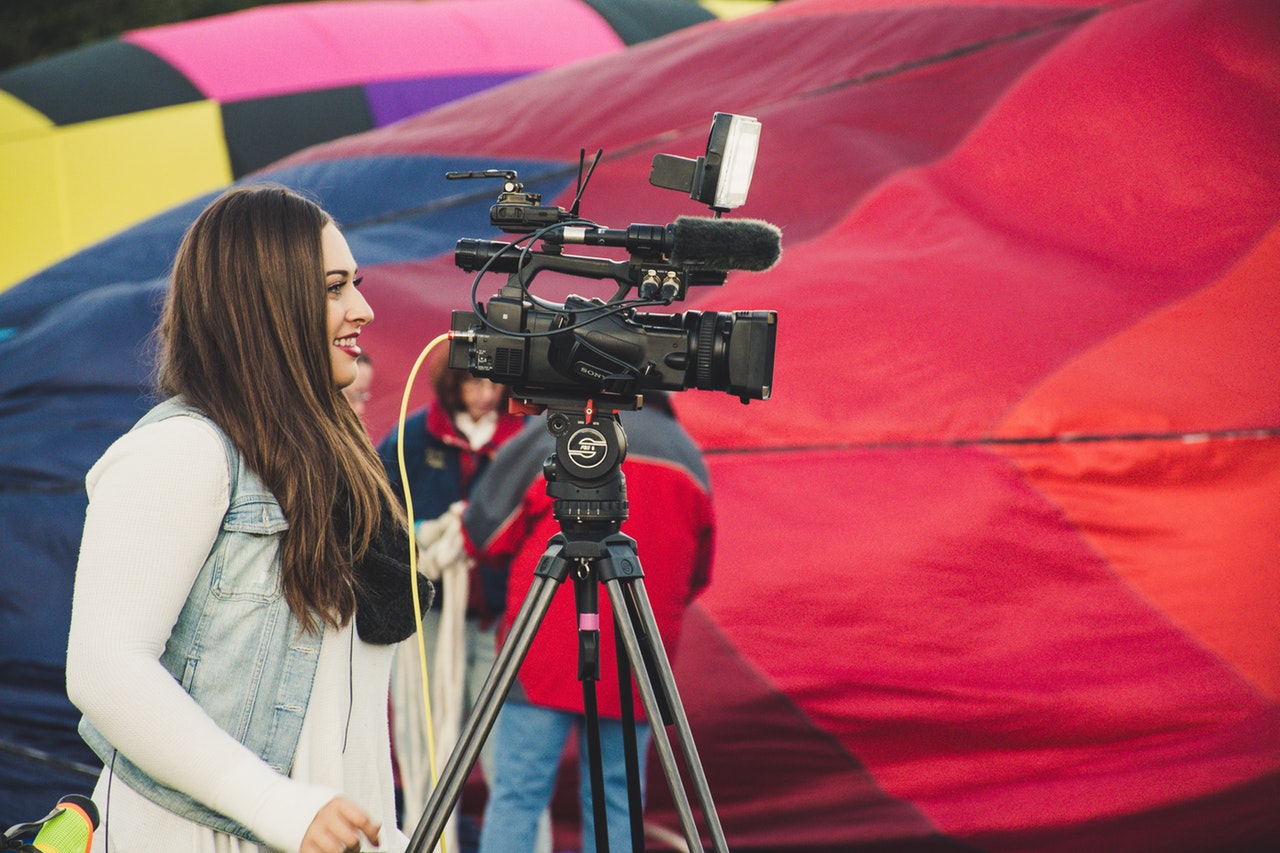Am 16. April hatte ich die Ehre, bei dem Future Females Event in Berlin zum oben genannten Thema zu sprechen.
Den wesentlichen Teil der Rede habe ich als eine Art Leitfaden aufgesetzt.

Quelle: Stefan Stefancik
About dynamic behind the struggle and how we are able to transform it.
Metaphor: There is a ladder leading into a hole of negativity, but there’s also a ladder leading out.
Fear, mindfuck and disconnection are the three main components the first ladder consists of.
Awareness, understanding and connection are the three main components for creating a positive dynamic within yourself.
Downwards
Step 1
Fear of failure
When we are afraid of failure our underlying insecurities come up.
- We may think, that we don’t have what it takes to realize our project.
- We may believe, we aren’t good enough at our field of expertise.
- We even may feel like not knowing anything at all.
Step 2
Judgement
We judge ourselves and others out of a place of our general mindset – driven by the fear of not being accepted. (We needed this kind of instinct to survive as prehistoric men.)
When we feel insecure, we compare what we do and how we do it with the general attitude towards economical improvement, profit and performance.
Doesn’t sound supportive? -> We stamp it as bad.
Step 3
Negative emotions
The moment we judge ourselves negatively, we generate negative emotions from the judgmental thoughts in our minds. Very soon, there is no difference anymore between what we feel and what we think who we are. This leads to feeling miserable and being cut off from our vision for the project.
Step 4
Blocked creativity
Creativity has its origin in our joy and comes to life through our curiosity. Fear is the opposite of joy. So, while we are occupied thinking and feeling bad about ourselves, we are not connected to our joy
Therefore, we are not able to see why we were interested in this project in the beginning. Our vision gets blurry and we can’t come up with any ideas. Even worse: We don’t feel able to do anything anymore.
Step 5
Confirmation of judgements
We immediately confirm any judgement. Whether it might be the complete lack of creativity or the negative image of ourselves in detail.
Suddenly, we feel any possible insecurity verified by this standstill and feeling of inability. We constantly prove our negative assumptions by taking our judgements as reality. As a result, we lose perception of actuality and the truth.
Step 6
Depression
In order to escape that bad feeling, we tend to suppress every feelings we have. When bad feelings overwhelm us, we don’t want to feel anything anymore. Here, overthinking is a tool to distract us from the fear we have.
In serious cases, we want to numb our physical senses as well. This can be overeating, alcohol, drugs, or any other kind of excessive consumption.
Step 7
Being stuck
Buying into our negativity has a variety of consequences. Restlessness and a lack of inner orientation are most often the matter. In general the discouragement (also called disheartenment) describes, what happens when we lose our self-confidence. Frequently stated as „feeling empty“.
Without the conscious connection to our heart, we are without passion.
Why are we falling into the whole of negativity in the first place? We somehow miss self-confidence. To be more specific: We miss self-awareness.
We tend to confuse ourselves with what we think of ourselves!
This said, we can now have a look at what helps us getting out of this confusion.
Upwards
Step 1
Breathing
The most important step to begin with, is breathing. It connects us with our body, calms us and allows us to watch what is going on in our minds from a higher point of view.
Feeling our body is the next crucial point. Emotions are directly reflected in our bodies.
Breathe in and breathe out, so you keep the flow …
Step 2
Insight
The second we recognize: “I am not the fear. The fear is not me.“ It loses its power. Immediately.
Every judgement we have, is a thought. Consciously or unconsciously, we decide what we think. We can change our thoughts anytime because we are not our thoughts. Changing the perspective to get another view on it is helpful to realize that we are stuck in thinking.
All we need is awareness.
Step 3
The pattern
Our mind works in patterns. In order to discover the active pattern, we can ask ourselves:
- What is it, that I am feeling?
- Which conviction must I have to experience this situation?
- Which thoughts are causing these feelings (or are at least connected to the feeling)?
- What will happen if I would not think this way?
Describe what really is, not what should be, was or might be.
Step 4
Responsibility
What did I do to get here? How did I create this experience? Let’s see which decisions led to what we face now.
Realize who is involved and if these people really contribute to this. Check if you are clearly busy with only your responsibility or if you take over responsibility for others, too.
Rather than sinking into feelings of guilt, it gives us the freedom of (self-)developing.
Step 5
Learnings
We need the process to gain a higher level of awareness of who we are and why we felt and thought and acted in a certain way. This helps us seeing the greater good in every situation.
In this process we learn gratefulness for the experience. We understand why and for what this situation or this state was important.
Step 6
The Why
We connect with our Why by realizing what change we want to see around us and by listening to our inner calling. By again breathing we get a clearer view, now that we discovered the pattern underneath.
It is useful to make so called mistakes to gain a deeper understanding of our own structure and the mechanisms we established to make sure that we get attention. We did this in order to survive – emotionally at least.
Being connected to our Why let us feel the passion again which drives us to create. Back in connection we experience the joy and playfulness of creation again
By knowing that we simply overthink any actions because we are afraid of failure, we are free to handle things differently.
By knowing that by aiming towards perfection we experience the decrease of our creativity, we can step back immediately and start to express ourselves (what we really think and feel) again.
Step 7
Action
A practical guide would be:
-
- Make a rough structure of what you are planning to do.
- Reduce those tasks to a doable size.
- Prioritize what is important, urgent or both.
- Start right now. (with whatever task possible at the moment)
- Keep going.The important thing is to stay active. Whether we overthought it, whether it seemed imperfect or whatever judgement we have about it. Any small step is worth acknowledging.



